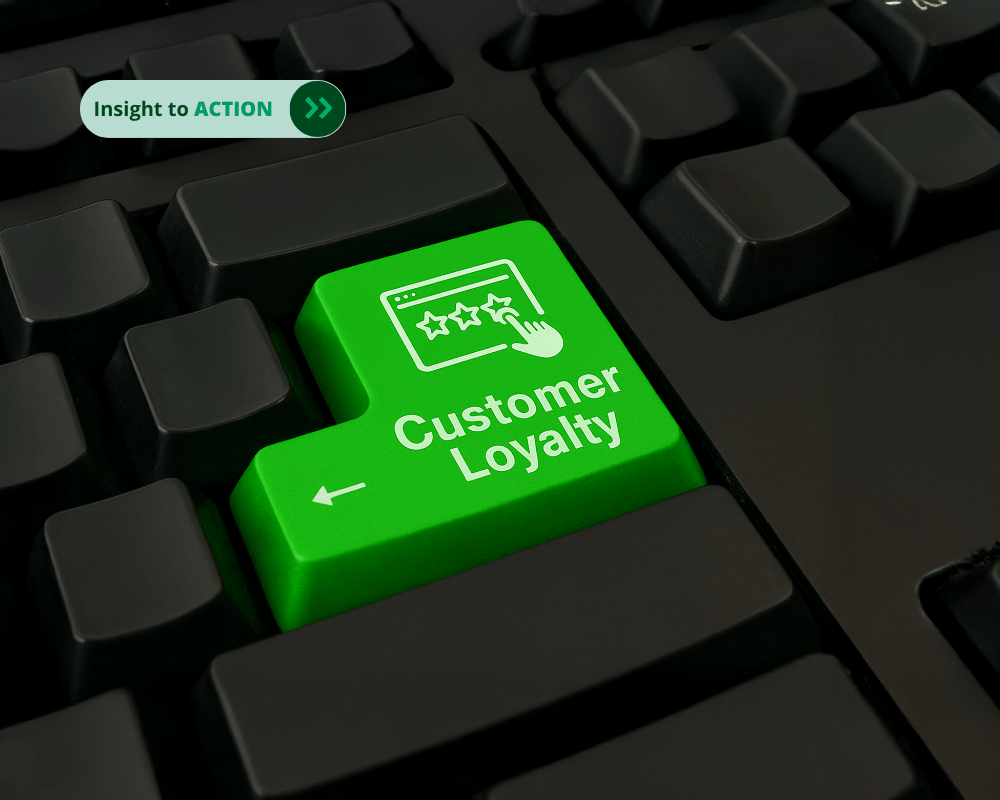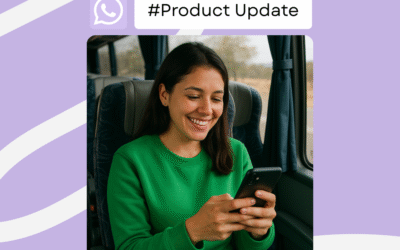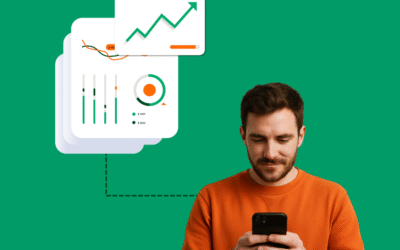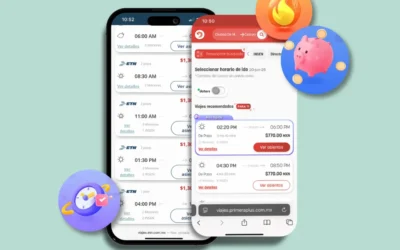Build loyalty and boost sales with a strategic loyalty program. Data, rewards, and examples such as Doters show their measurable impact.
The companies that are truly growing are those that build long-term relationships with their users, strengthen their channels, and leverage technology to personalize every touchpoint.
And there is one strategy capable of achieving this lasting connection: a well-designed loyalty program, built to offer a unique experience within the direct channel. Contrary to what some may think, loyalty programs are not just for accumulating and redeeming points, nor are they limited to physical cards or generic discounts; today, they are digital ecosystems that connect data to develop strategies that help gain relevance through purchasing experiences and personalized rewards for each user.
Bus companies that rely solely on ticket sales—without data analysis or loyalty strategies—risk losing control over their direct channels and becoming increasingly dependent on intermediaries. A well-executed loyalty program can change everything. It allows for better connection with passengers, strengthens the direct channel, and increases sustained revenue over time.
All service providers must deliver impeccable service; it is difficult to generate loyalty if the passenger has a bad experience. But after meeting that standard, the challenge is to stand out. – Pablo Sordo, Chief Loyalty Officer at Viva and Doters.
According to Bond Brand Loyalty, 79% of consumers say they are more likely to buy from brands that offer personalized experiences.
Airlines have been pioneers in using loyalty programs as engines for revenue and retention. For example, in 2022, Delta reported over $7 billion in revenue tied to its SkyMiles program, including direct flight sales and credit card partnerships. Meanwhile, United Airlines, with its MileagePlus program, has stated that member passengers spend up to twice as much as non-registered passengers.
It is necessary to design benefits that truly matter to passengers (preferred seating, discounts for frequent travel, upgrades). It is not about giving everything to everyone, but about offering the right benefits to each individual.
A passenger who feels rewarded and recognized is more likely to:
- Purchase through the brand’s app or website.
- Travel more frequently.
- Recommend the service.
- Choose ancillaries or upgrades (such as selecting a seat or purchasing extra luggage).
The impact of loyalty programs on consumer spending in Latin America varies by age, but overall, 82% of respondents say these programs influence their spending level, either “to some extent” (62%) or “to a great extent” (20%).
Loyalty is the result of a company’s consistent effort to go beyond day-to-day service and create a genuine connection: generating attachment, affinity, and the real desire to choose them again. – Pablo Sordo, Chief Loyalty Officer at Viva and Doters.
Simplicity is what converts
A common mistake is designing programs so complex that passengers do not know how to use them. Users must quickly feel the value of their loyalty. Pablo shares that at Doters, they aim to make earning and redeeming points as easy as two clicks.
The digital experience must be smooth, immediate, and frictionless—something that requires strong technological development. Pablo believes technology is essential to simplifying and delivering rewards without complications.
McKinsey estimates that 65% of users abandon a loyalty program due to complex redemption processes.
Understanding how consumers enroll in loyalty programs is essential for optimizing digital channels and improving the experience from the very first contact. In Latin America, digital channels lead sign-ups: 30% of users register through the brand’s mobile app, and 29% via its website, according to the study Estrategias y programas de fidelización en América Latina 2025, conducted by EY consulting.
The data shows that younger consumers (18–24 years old) have a strong preference for mobile registration (33%), while those aged 65 and older rely more on automatic enrollment by the brand (32%) or in-store counters (25%).
This confirms a clear trend: most consumers value fast, accessible, and online registration processes.
How to measure the effectiveness of a loyalty program
In a context where almost every brand offers some reward, measuring effectiveness becomes key to standing out and optimizing resources.
The most important metric in a loyalty program is activity—that is, how many users are earning or redeeming points. This metric, known as the activity rate, serves as the main indicator to determine whether the program is not only in place but is being actively used and generating engagement.
We may have a huge base of registered customers, but if they are not interacting with the program, they are not adding value or helping to build loyalty. What truly moves the needle is active participation. – Pablo Sordo, Chief Loyalty Officer at Viva and Doters.
In addition to the activity rate, other key metrics include:
- Frequency of direct channel use after enrollment.
- Reward redemption rate: the percentage of points earned that turn into real benefits.
- Average time to first redemption, which indicates whether users are seeing value quickly.
- Average ticket value among loyal vs. non-loyal users.
According to EY, 61% of consumers are enrolled in programs from two or more brands within the same category, proving that loyalty is not exclusive and that they seek the best available offers.
To stand out in a competitive environment, companies must differentiate their benefits, although many have yet to adapt their programs to achieve this.
For example, Doters is the loyalty program of Viva, one of the most relevant low-cost airlines in Latin America, as well as other Grupo IAMSA brands such as ETN Turistar, Costa Line, Autovías La Línea, along with strategic partners like Primera Plus and roll&bits.
Its impact is measurable and significant: it has more than 10 million active members and a network of over 15 strategic partners, including banks, bus companies, and car rental agencies. User activity levels surpass industry standards, and more than 50% of Viva passengers are already part of the program.
Additionally, Doters members fly approximately 50% more than average, while HSBC Viva users fly 150% more on average. This is a clear example of how a well-designed loyalty strategy can generate real and sustained value.
Direct channel data: a valuable asset for loyalty programs
When bus passengers purchase through intermediaries, key information is lost about who they are, which routes they prefer, and how often they travel.
A loyalty program allows companies to centralize behavioral data to personalize offers and anticipate needs. It also encourages passengers to purchase directly through the company’s digital channels, such as its website or app, avoiding third-party commissions and improving margins.
If I know a passenger dislikes traveling in a window seat, I won’t offer them one. Personalization is key to building trust. – Pablo Sordo, Chief Loyalty Officer at Viva and Doters.
Consumers in Latin America consider personalization a fundamental factor in their loyalty program. Effective personalization not only fosters loyalty but also enables a deeper relationship with consumers, according to the EY study.
50% of consumers consider it “very important” to be able to choose their rewards.
Loyalty is neither automatic nor built with generic discounts. It is a strategy to connect emotionally with the passenger, get to know them better, and strengthen the direct channel.
Loyalty is built step by step, with clear incentives, simplicity, and personalization. If your program feels like “just another points card,” the passenger will not return. If it delivers real value, the passenger will choose you again and again. – Pablo Sordo, Chief Loyalty Officer at Viva and Doters.
In an environment where passengers constantly compare options and benefits, loyalty is not won with empty promises, but with relevant, simple, and personalized experiences. For the bus sector, this represents a major opportunity: turning each trip into a long-term relationship.
A well-designed loyalty program not only drives repeat purchases and strengthens the direct channel but it also enables informed decision-making with data-driven insights. The next step is to build a loyalty program that truly makes a difference.
Companies using Reserhub Commerce technology leverage their users’ data and behavior from their direct sales channels to create or strengthen their loyalty programs. These programs are fueled by every interaction and insight, offering personalized and close shopping experiences. When the passenger is at the center, results follow naturally.




